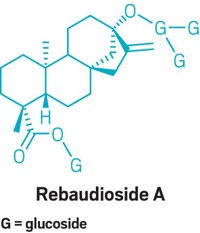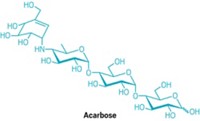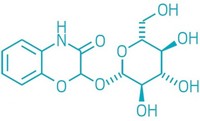Advertisement
Grab your lab coat. Let's get started
Welcome!
Welcome!
Create an account below to get 6 C&EN articles per month, receive newsletters and more - all free.
It seems this is your first time logging in online. Please enter the following information to continue.
As an ACS member you automatically get access to this site. All we need is few more details to create your reading experience.
Not you? Sign in with a different account.
Not you? Sign in with a different account.
ERROR 1
ERROR 1
ERROR 2
ERROR 2
ERROR 2
ERROR 2
ERROR 2
Password and Confirm password must match.
If you have an ACS member number, please enter it here so we can link this account to your membership. (optional)
ERROR 2
ACS values your privacy. By submitting your information, you are gaining access to C&EN and subscribing to our weekly newsletter. We use the information you provide to make your reading experience better, and we will never sell your data to third party members.
Natural Products
ACS Meeting News: Looking Beyond The Sugars In Sweeteners
Natural sweeteners maple syrup, agave, and honey are complex mixtures with bioactive components that might confer health benefits
by Celia Henry Arnaud
April 14, 2014
| A version of this story appeared in
Volume 92, Issue 15
Maple syrup, agave, and honey are well-known for their roles as sweeteners. As such, their primary constituents are simple sugars such as sucrose and fructose. But scientists exploring the composition of these sweeteners are finding them to be surprisingly complicated.
These sweet mixtures contain many other classes of compounds, especially polyphenols, some of which may have bioactivity that imparts health benefits. Scientists hope to identify the beneficial compounds and eventually increase their concentration in sweeteners, so sweets can be more than just treats. Researchers described their latest findings in a symposium sponsored by the Division of Agricultural & Food Chemistry at the American Chemical Society national meeting held last month in Dallas.
Maple syrup is produced from sap of certain maple species, especially the sugar maple, Acer saccharum, which is native to eastern North America. Maple syrup is produced only in the U.S. and Canada, and about 80% of the world’s supply comes from Quebec.
Syrup production requires warm days and cool nights, so it happens only in late winter and early spring. After sap is collected from the maple trees, producers boil it to concentrate it into syrup. It takes about 40 L of sap—which is much closer to water in consistency than to the thick, sticky goo that the word sap calls to mind—to produce a single liter of syrup.
Maple syrup is about 60% sucrose by weight. Navindra P. Seeram, an associate professor of biomedical and pharmaceutical sciences in the College of Pharmacy at the University of Rhode Island, and coworkers have found that the other 40% comprises a complex cocktail of ingredients.
So far, they have isolated and identified more than 60 compounds in maple syrup. Some of them were already known to be in the syrup; others were not. They include carbohydrates, amino acids, organic acids, vitamins, minerals, plant hormones, and phytochemicals, especially polyphenols.
Seeram calls these compounds “the tip of the iceberg.”
The maple syrup compounds Seeram’s team has unearthed include ones never seen before. For example, the researchers discovered a phenylpropanoid that they named quebecol. Quebecol was in the syrup but not in raw sap. “It probably forms during the cooking process,” he said.
These phenolic compounds and other constituents might have beneficial health effects. But scientists don’t understand how, or even whether, these diverse constituents impart biological effects when a person eats maple syrup.
The maple sap from which the syrup is produced is now being marketed as a new type of healthful water. The idea isn’t as far-fetched as it sounds. Maple sap is mostly water, and it has long been consumed as a health tonic by indigenous people in eastern North America, said Tao Yuan, a postdoc who works with Seeram.
To produce the tonic, the sap is pasteurized to eliminate bacterial growth. Yuan wondered: Do the phenolic compounds in the sap survive the thermal treatment?
He set out to find the answer by identifying phenolic compounds in maple sap before and after thermal treatments. Yuan detected 15 major phenolic compounds in sap. Unlike the intensive boiling process used to make syrup, which can generate new components, the thermal treatments used for pasteurization and sterilization involve high heat for only a few seconds and don’t result in any process-derived products.
All of the major components survive thermal processing, Yuan reported. The major organic acids in maple sap are malic and fumaric acids. Arginine, threonine, and proline are the major amino acids. Sodium, potassium, and calcium are the most abundant minerals.
Yuan measured the antioxidant activity of maple sap using 2,2-diphenyl-1-picrylhydrazyl (DPPH), a well-known radical scavenger. Maple sap’s “natural polyphenol content imparts antioxidant activity to this beverage without any additives,” he concluded.
An ethanol extract of maple syrup called MSX is being investigated as a potential nutraceutical, said Yan Zhang, another postdoc in Seeram’s group. The extract comes from grades of maple syrup that are considered to be too dark for commercial sale. In Dallas, Zhang reported on the composition and biological effects of MSX.
MSX’s polyphenol profile is similar to that of pure maple syrup, Zhang said. She identified 42 compounds in MSX, two of which were new, and verified their structures by nuclear magnetic resonance. In addition, in vitro biological assays showed that MSX has both antioxidant and anti-inflammatory activity, Zhang said.
Other researchers are studying the health effects of maple syrup and extracts in animal models. For example, Keiko Abe, a professor emerita at the University of Tokyo and a researcher at Kanagawa Academy of Science & Technology, is feeding extracts with different polyphenol levels to mice.
Abe supplemented the diets of diabetic mice with an ethanol extract containing 6–8% polyphenols and compared these mice to diabetic mice on a regular diet. She observed relatively small changes in the blood biochemistry of the mice fed the maple products. However, DNA microarray analysis showed that many genes related to lipid metabolism, inflammation, and insulin sensitivity were expressed at different levels than in the control group.

For example, genes related to fat oxidation were up-regulated, and ones related to lipid synthesis were down-regulated, both of which should lead to less lipid accumulation. Also, genes associated with the formation of glucose were down-regulated, and some associated with glucose storage as glycogen were up-regulated. The overall gene expression suggests decreased inflammation, increased lipid oxidation, and improved insulin sensitivity.
Abe attributes the limited biochemical changes to the fact that food effects are often small and slow. But based on the gene expression patterns, she is confident that maple products can have a beneficial health effect.
André Marette reported results in mice that would seem to support that same claim. A professor of medicine at Laval University, in Quebec, Marette measured the acute metabolic response of healthy rats to a broad range of sweeteners—maple, molasses, brown rice syrup, agave syrup, corn syrup, and honey. He used dextrose as a reference. He adjusted the dose of each sweetener to provide equivalent amounts of carbohydrates. The sweeteners were delivered through a feeding tube so that taste perception would not be a factor.
The sweeteners evoked different glucose responses in blood tests. The glucose spike in response to maple syrup was significantly lower than that in response to brown rice syrup, corn syrup, or dextrose. Other sweeteners induced intermediate responses.

The amount of insulin produced in response to the various sweeteners also differed. Maple, molasses, and agave resulted in less production of gastric inhibitory polypeptide, a glucose-dependent hormone that induces insulin secretion, than other sweeteners. Maple and the other sweeteners did not differ significantly with respect to other digestive hormones, including ghrelin, glucagon-like peptide-1, leptin, and glucagon. These results suggest that maple syrup improves insulin sensitivity and glucose tolerance, Marette said.
And some researchers are working on ways to enrich maple syrup in healthful components that aren’t there to begin with, using less healthful components that are. Salwa Karboune, an assistant professor of food science and agricultural chemistry at McGill University, in Quebec, is developing one such method. Karboune uses biocatalysis to convert maple syrup’s sucrose into strings of fructose known as fructooligosaccharides, which are thought to have health benefits as a prebiotic. Such prebiotic compounds are administered to nurture health-promoting bacteria in the human gut.
To generate these fructooligosaccharides, Karboune uses the enzyme levansucrase, which catalyzes the transfer of fructose from one sucrose molecule to another. The enzyme continues to add more fructose molecules, building a fructooligosaccharide. The levansucrase selectively forms only β(1→2) linkages. This saccharide linkage prevents the prebiotic from being destroyed in the gut before reaching its target bacteria.

Because the enzyme uses sucrose as its substrate, it’s “ideal for maple, because maple has high sucrose content,” Karboune said. “We’re hoping to be able to enrich maple products with fructooligosaccharides.” She could enrich the syrup itself or use low-grade maple products as a feedstock to produce a supplement.
Maple isn’t the only natural sweetener that researchers are hoping to learn more about.
Agave syrup, for example, is growing in popularity among consumers. It is about 85% fructose, but like maple syrup, it is much more complex than its primary sugar. Mercedes López, a researcher at the Center for Research & Advanced Studies of the National Polytechnic Institute, in Mexico, is studying agave’s composition and potential health benefits.

Agave syrup is obtained from several different plant species, but most agave syrup is obtained from Agave tequilana, which is native to Mexico. A. tequilana grows for six to eight years before it is harvested. The syrup is obtained by chopping or macerating the plant’s base and cooking it to break down fructooligosaccharide storage carbohydrates known as agavins, fibers made of long chains of fructose. In addition to fructose, agave syrup contains phenolic compounds, flavonoids, and Maillard products (the result of reactions between amino acids and sugars at high temperatures).
Some commercial agave syrups contain unhydrolyzed agavins, López said. She wondered whether they might have beneficial effects similar to those of inulin, a type of fructooligosaccharide found in plants such as chicory. Inulin has been shown to have a prebiotic effect and to help increase insulin secretion. But the branching structure of agavins differs from that of inulin. López wanted to find out if agavins have similar effects.
To determine the effects of agavins, López fed some mice a standard diet and other mice a standard diet supplemented with agavins in their water. Mice that received agavins ate less, gained less weight, and had lower blood glucose levels than did those on the control diet, López said. She is now studying the effect of agavins on hormones.
Agavins are sweet but not digestible, and López thinks they could be used as a sweetener for diabetics. She is still investigating whether agavins could be used as prebiotics.
The research that scientists are doing on sweeteners could lead to more healthful versions of the popular syrups. “You probably shouldn’t be eating a sweetener to get antioxidants,” Seeram told C&EN. “But if you’re choosing a sweetener anyway, you should know enough to make an informed decision about natural sweeteners and what’s in them.”
Advertisement
ANTIMICROBIAL EFFECTS
Honey Interferes With Bacterial Communication And Biofilm Formation
Plenty of people use honey as a sweetener. But honey is proving to also have antimicrobial properties. At the American Chemical Society meeting in Dallas last month, Susan M. Meschwitz, an assistant professor at Salve Regina University in Newport, R.I., described her group’s work to uncover some of the ways that honey exerts its antimicrobial effects.
Honey has been used to accelerate wound healing since at least ancient Roman times. Today, a type of honey called manuka honey, from New Zealand, is available as a topical wound-healing ointment.
Honey contains about 38% fructose and 31% glucose, Meschwitz said. Because of the way it is produced, honey also contains some components that come from plants and some that come from the bees. Those components include organic acids, phenolics, and proteins and amino acids. There are more than 300 distinct honeys in the U.S. and more than 3,000 worldwide, Meschwitz said. Most contain the same phenolics but in different proportions, she added.
Scientists understand some of the mechanisms behind honey’s antimicrobial activity. For example, honey’s acidity—it has a pH between 3.2 and 4.5—provides a harsh environment for some microbes. Its high sugar content can kill bacteria by drawing water from their cells via osmosis.
A more surprising antimicrobial agent in honey is hydrogen peroxide. Bees add the enzyme glucose oxidase to the honey as they produce it. When this enzyme catalyzes the oxidation of glucose, it forms hydrogen peroxide as a by-product. The effect of hydrogen peroxide is most pronounced when honey is diluted to 30 to 50%, Meschwitz said.
But many other components could also be contributing to honey’s antimicrobial properties, including phenolics, methylglyoxal, and even peptides. These components vary with the floral source.
But outright killing of microbes is only part of the activity of honey. Honey may also have antivirulence properties that prevent microbes from infecting cells, Meschwitz said.
For example, honey may prevent bacteria from communicating with one another via quorum sensing, a chemical way that bacterial cells coordinate with their neighbors so that they work in tandem. It is involved in the formation of adhesive biofilms such as those in dental plaque.
In lab tests, Meschwitz has shown that honey inhibits quorum sensing. The effect is concentration dependent up to about 30%. She is also studying how honey may inhibit other aspects of biofilm formation such as adhesion and motility. Meschwitz does not yet know which components in honey are responsible for these effects.






Join the conversation
Contact the reporter
Submit a Letter to the Editor for publication
Engage with us on Twitter